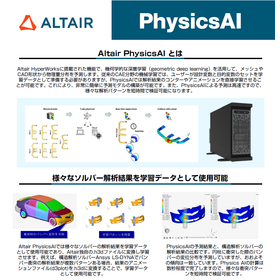Specify a set of nodes that are on the same plane! Calculate the electric field at each node and set it as the loading condition.
In versions prior to Ver8.0 of "PHOTO-WAVEjω," it was necessary to set the electric field (3 components) at nodes or the current density (3 components) at elements as load conditions. Since Ver8.2, a feature has been added to automatically set these load conditions. Users can specify a set of nodes that are on the same plane, and by simply inputting a few parameters, the program calculates the electric field at each node and sets it as the load condition. [Issues] ■ In versions prior to Ver8.0 of "PHOTO-WAVEjω," it was necessary to set the electric field at nodes or the current density at elements as load conditions. ■ When setting the electric field in a rectangular waveguide, it was necessary to set each electric field component from the coordinates of each node, which was a cumbersome task for users. *For more details, please refer to the related links or feel free to contact us.
Inquire About This Product
basic information
**Method for Automatic Setting of Load Conditions** ■ Specify ports at the nodes on the plane where you want to set the load (electric field) ■ Choose either TE wave or TM wave as the mode of the electromagnetic wave you are considering ■ Select either "maximum electric field" or "power" from the category of parameters ■ Choose from the order items how many modes to calculate from the first mode ■ Input the maximum value of the electric field or the power value for the load condition in the "intensity" item ■ Finally, input the phase value at the port *For more details, please refer to the related links or feel free to contact us.*
Price range
Delivery Time
Applications/Examples of results
For more details, please refer to the related links or feel free to contact us.
Company information
At Photon, we are developing "electromagnetic field analysis software" that models and simulates products and components utilizing electromagnetic phenomena on a computer. In traditional design and development environments, the process has primarily revolved around trial and error through prototyping based on the experience of engineers and experiments with prototypes. However, conducting experiments using actual prototypes and analyzing the results requires significant time and cost. Moving forward, transitioning from an experimental and prototyping-based approach to an analysis-based design approach will be a crucial challenge for improving productivity, and establishing simulation technology as the core of analysis-based design techniques will be essential. In this context, Photon is developing and providing "analysis software" focusing on electromagnetic fields, as well as heat, vibration, and sound fields. By utilizing Photon's software, efficient development and design of various industrial products can be achieved. In this way, Photon aims to support users in reducing the number of prototypes, lowering development costs, and shortening development periods in their manufacturing environments, ultimately enhancing their competitiveness.



![[Analysis Example] Electromagnetic Wave Analysis Animation Library for Waveguides](https://image.mono.ipros.com/public/product/image/888/2000763827/IPROS09437893911385746829.png?w=280&h=280)







![SOLIDWORKS 2026 New Features Seminar [Free Participation]](https://image.mono.ipros.com/public/default/object/noimage_l.gif?w=280&h=280)